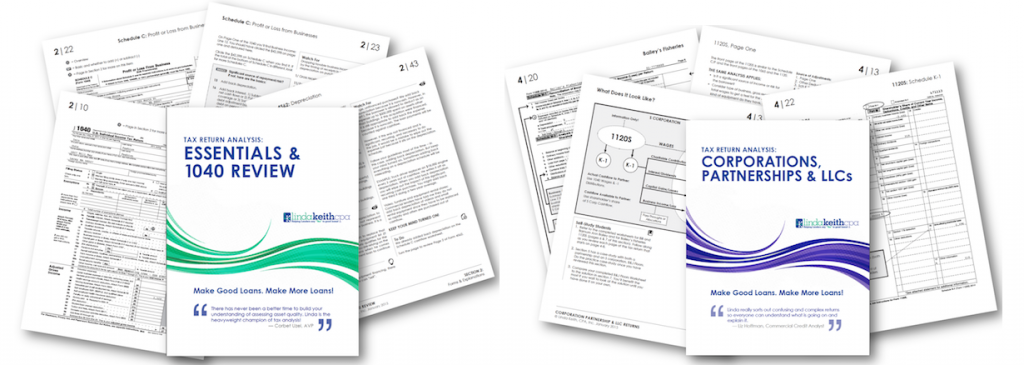Patrick’s question:
In your manual, Tax Return Analysis: Fundamentals and 1040, you state that interest from a partnership or S corporation can represent payments on a loan made to the entity and for which the borrower is receiving payments. Do you mean the borrower lent money to the entity? And by payments, do you mean principal and interest on the loan the borrower made to the company? How can I tell if it is pass-through interest or actual cash flow?
Linda’s answer:
The interest listed from a partnership or S corporation on a Schedule B can represent several things. If the taxpayer is not an owner, it means they either sold something to the company and are being paid on an installment basis, or they lent money to the company.
At the point you first see the interest listed on Schedule B, however, you may not yet know if the 1040-filer is an owner of the company.
If you know they are an owner, the possibilities expand. It could be as described in the paragraph above: a loan or installment payments on a sale. But it also could be pass-through interest which is not cash flow at all.
How pass-through entities work
Partnerships, LLCs filing a 1065 and S corporations are pass-through entities. They do not pay taxes generally, although they do in some circumstances. Instead, through a K-1, they pass the income, deductions and credits through to the owner, who pays the taxes.
One of the types of income passed through is interest income. Other types include dividend income, ordinary income and capital gains, to name a few.
How do you tell if it is pass-through or actual payments?
Some tax prep software will label it as K-1 Interest. But some label it with the name of the company. If so, Patrick, you cannot tell by looking at the 1040. If you have the K-1 as well, you can look for the amount on Line 2 Interest Income and if it matches the amount on 1040 Schedule B, that answers your question. It is pass-through and does not represent cash flow to the 1040 taxpayer.
If you do not have the K-1, you will have to ask. But most lending and credit professionals doing tax return analysis to calculate global cash flow will obtain the K-1 if the taxpayer is an owner, and you will be able to check.
What do I need to know if it is not pass-through?
If it is not pass-through, then it is part of the payment on a loan or an installment sale. But only the interest portion of the payments is reported on Schedule B. You need to ask the borrower if they are receiving payments on a loan, note or contract to find out the full payments received. Then get a copy of the loan or note documents to prove the amount and how long the payments will continue.
If you have a Form 6252 you can also check Line 21 to see how much principal was received. Based on your question, you have our manual. For readers who do not, if you are not familiar with these concepts, consider ordering the 1040 manual.
Where can lenders learn more about Schedule B and pass-through entities?
Our manuals on Tax Return Analysis, one on Fundamentals and 1040 and a second on Business Tax Returns cover these topics.

Of the 35 modules in https://LendersOnlineTraining.com, there is one on Types of Entities, one on Schedule B, three on 1065-filing entities and three on S corporations. You can take a free demo of five of the modules here.

